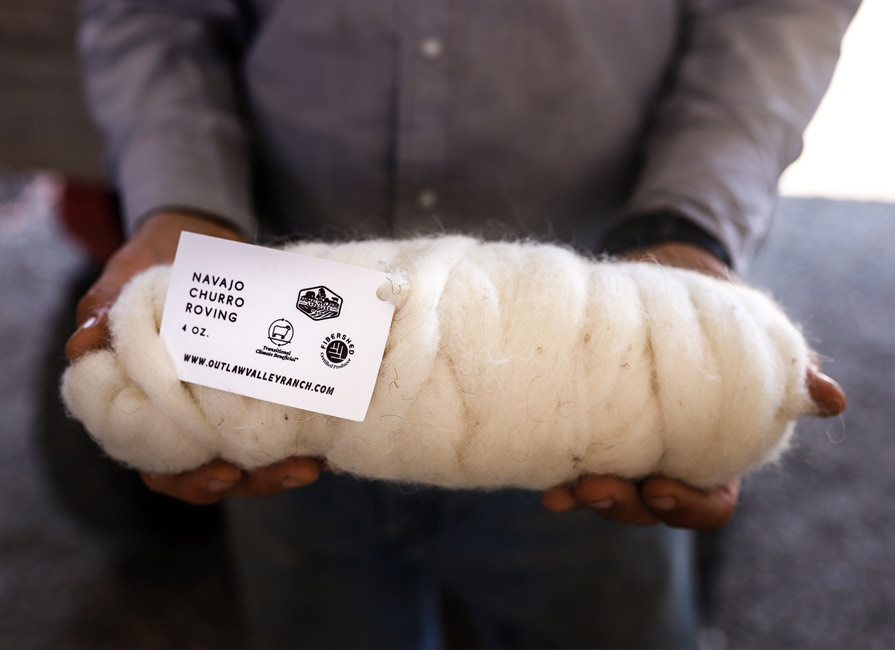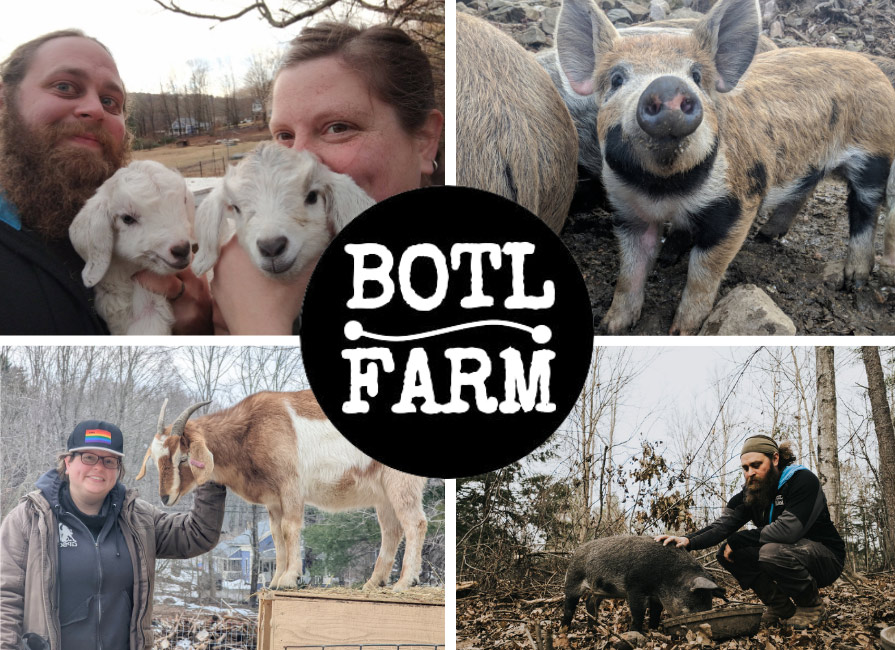Market research shows that today’s consumers are increasingly interested in knowing where their food comes…

Get On My Land!
If you were to see a path leading to new opportunities for your farm, would you take it? What if this path included proven steps to widen your outreach, cultivate new customers, and increase your bottom line?
The creative blend of farming and tourism known as ‘agritourism’ can open an exciting gateway to untapped potential for you, your farm, your family and your community. And you don’t need to spend a ton of money or hours of precious downtime to make your on-farm event successful. Read on to see if agritourism is a good fit for you.
Creating connections
As a farmer, you are no stranger to hard work and the ever-present need to navigate the changing landscape of agriculture. Agritourism offers an opportunity to not only educate and entertain, but to forge lasting connections with a diverse range of like-minded people.
Imagine welcoming visitors to your farm, offering them a unique firsthand experience of rural life, and igniting their passion for sustainable agriculture. By inviting guests to step into your world and witness the beauty and authenticity of farming, you have the power to cultivate a devoted community of followers, supporters, and patrons.
Whether you’re looking to expand into farm tours, host farm-to-table events, or offer workshops and educational programs, the opportunities are vast with exciting rewards. You can transform your farm into an immersive destination, attracting visitors from your local area and beyond; those who seek hands-on experiences and a deeper connection with the origins of their food and clothing.
Raising awareness
Let’s begin with some proven steps to catch and keep the attention of the people you want to attract. Targeted and creative pre-event marketing is the hook and net that will move people from a place of passive “sounds cool” to active “sign me up!” Before you launch your event marketing outreach, think about “why” someone would want to head over to your farm for an event. What’s in it for them? Plenty …
Reconnect with nature: Agritourism provides a refreshing escape from the often-crushing intensity and speed of life.
Support local economy: Agritourism provides the public with an opportunity to directly support local farmers and contribute to the revitalization of rural communities. By purchasing farm-fresh products, participating in farm-based activities, and spreading the word about the farm experience, visitors become advocates for sustainable agriculture and agents of positive change.
Health and wellbeing: Spending time on a farm engages the senses and offers a experience that promotes mental and physical wellbeing. Carefully interacting with animals, participating in outdoor activities, and breathing fresh air creates a positive impact on overall health, sleep patterns, and happiness.
Strengthening the bond with food: Agritourism deepens the connection between consumers and their food. By watching the production process and understanding the values and practices behind it, guests can make more informed choices about the food they consume that will in turn support sustainable and ethical farming practices.
Health and safety
Even the smallest farm-related accident or illness can potentially wreak havoc with your reputation and potentially impact you economically as well. Yet the benefits of agritourism far outweigh any possible downsides for you or your business.
While we obviously do not want the public to perceive farms as an acres-wide petri dish of lethal diseases and mechanical threats, everyone is best served by taking the following steps for any on-farm event:
Contact your current insurance provider: Discuss details of what is planned with your insurance providers. Share specifics, including anticipated number of guests (are children attending?), interactions with farm animals, any farm equipment used (such as tractor wagon rides), if alcohol will be served (such as a BYOB farm-to-table dinner), health and safety measures, and so on. Insurance riders are typically not high and can provide additional coverage ‘just in case.’ It takes only a few minutes to place the call or email and will provide peace of mind in the unlikely event of an accident.
Develop a biosecurity and safety plan: Partner with your veterinarian to create a biosecurity plan that clearly outlines the measures to be taken before, during, and after the event to protect the health of both humans and animals. Are your fences hot? Are there tools or equipment within reach of guests? Can visitors gain access to dangerous machinery or high-risk areas? Do you have stocked first aid kits at hand? Without a plan, there can be no accountability for actions.
Check animals before the event: Assess the health status of participating animals. Only include animals that are up to date with vaccinations and show no signs of hesitation or illness. Operate with the understanding that no animal is bombproof. Communicate to guests: Provide clear verbal (and ideally written) instructions to farm guests on general farm safety, specific no-go areas, livestock awareness, and so on, as well as hygiene practices and biosecurity protocols, emphasizing the importance of following the measures for both humans and animal safety. Display signage, such as “This is a working farm,” “Do not enter,” “Do not touch livestock,” or “Wash your hands,” “Parking,” “Restrooms,” as appropriate.
Visitor control measures: Establish designated entry and exit points, limit access to animal areas and any specific locations of higher risk, and provide handwashing stations (or hand sanitizer) throughout the event site.
Maintain clean and sanitized facilities: Regularly clean and disinfect equipment, tools, and facilities to reduce the spread of pathogens during the event. This demonstrates your commitment to the proper treatment and welfare of animals.
Use proper waste disposal methods: Promptly remove and dispose of animal waste, used bedding, and feed to minimize disease transmission and reduce odors. Proper disposal contributes to a healthier environment for both humans and animals (and sets a good example).
Require proper footwear: Open-toed shoes should not be permitted. Disposable shoe covers are recommended. If shoe covers are not available, a sanitizing footbath mat is another option. Discuss with your veterinarian.
Protect animals from potential stressors: Provide ample space to prevent overcrowding and minimize stress. Explaining the natural behaviors and needs of animals during the event encourages compassion and empathic understanding.
Monitor animal health during the event: Be aware of signs of illness or stress in participating animals and take appropriate action.
Adhere to biosecurity regulations: Familiarize yourself with all relevant local and national biosecurity laws and guidelines to ensure your event aligns with the recent safety standards.
Promoting your event
Here are some top tips for advertising your event:
Social media is still the leader of the pack, with the majority of platforms being free. Facebook, Instagram, and Eventbrite are ideal tools to reach the masses. Photographs and short videos are surefire ways to stop user scrolling and catch attention. Include a scenic area of your farm, a newborn animal, or an up-close smiling farmer! Humans are visual creatures and we are attracted to pleasing images. Next, tie-in your photo to your event. Your message is best when short. For example: Get ready to immerse yourself in the fascinating world of farming! Join us for a day filled with fresh flavors, a bit of hard work, and farm-fueled fun. Or, “Put on some old jeans and boots then head over to the farm for a day knee-deep in nature’s wonder.” Create an event page on all three platforms mentioned above with details, directions, and contact information.
Leverage local community resources and contact local community organizations, such as farmers’ markets, agricultural cooperatives, or community centers, and ask them to help spread the word. They may be willing to share the event details in their newsletters, on bulletin boards, or through word-of-mouth among their members.
Partner with local businesses and cross-promote. Reach out to businesses and explore opportunities for collaboration. Consider co-hosting the event with a related business that like you supports sustainable agriculture and animal welfare.
Online directories. Submit the event details, including date, time, location, and a short but creative description, to relevant online directories, event listing websites, and local community event calendars. This will increase the event’s visibility and attract attendees who actively search for local events or activities.
Traditional outreach methods. Despite the abundance of digital marketing, traditional advertising methods remain effective, which is a bonus for a tight budget. Design and print an eye-catching flyer or poster and distribute them in strategic locations around the community, such as grocery stores, libraries, schools, and local businesses, including restaurants.
Local print and broadcast news. Pitch your story to the local press. Readers and viewers who want community connection will pay attention to what is happening around the region. Ask for an opportunity to talk with a reporter so you can share in your own words why your farm event is the place to be.
‘Meet your farmer’. Offer a session that includes a sit-down face-to-face conversation with the one who knows farming best—you.
Remember, regardless of the methods you use, it is important to clearly communicate the unique selling points and benefits of attending. Highlight activities, interactive experiences, or educational sessions that attendees can look forward to, as well as any special offerings, such as locally sourced food, live music, or farm tours to attract a wide range of audience.
Finally, if you are like most farmers, you already have a multitude of daily sun-up-to-sun-down responsibilities. You may be wondering how you are expected to find the time and creative bandwidth to market your event! Depending on where you live, chances are you have a wealth of free resources nearby. Local colleges and universities are filled with marketing, communications, advertising, public relations, media, and journalism students who are actively looking for work experience opportunities. Reach out to them.
Enjoy!
Planning an on-farm event is more than just organizing a day out. It’s an opportunity to facilitate critical engagements among guests, farm staff, and even farm animals. Your farm event can be far more than a public gathering: it can lead to positive psychosocial outcomes for people, while educating them about the ethical treatment and welfare of animals and the importance of sustainable farming. They’re great fun, too!
Further information
- The U.S. Department of Agriculture (USDA) offers a wealth of online agritourism resources
- The National Agricultural Law Center has an extensive online agritourism resource library
- The Farming Landscapes Project’s Farming Landscape Toolkit: A guide to running farm events.
- The British Columbia Ministry of Agriculture’s Farm Diversification Through Agri-Tourism: A Manual to Guide Agri-tourism Development.
Author: Suzanne Kapral is the Director at The Lands at Hillside Farms, Shavertown, PA. Visit thelandsathillsidefarms.org
Originally published in the Spring 2024 issue of AGW’s Sustainable Farming magazine.



